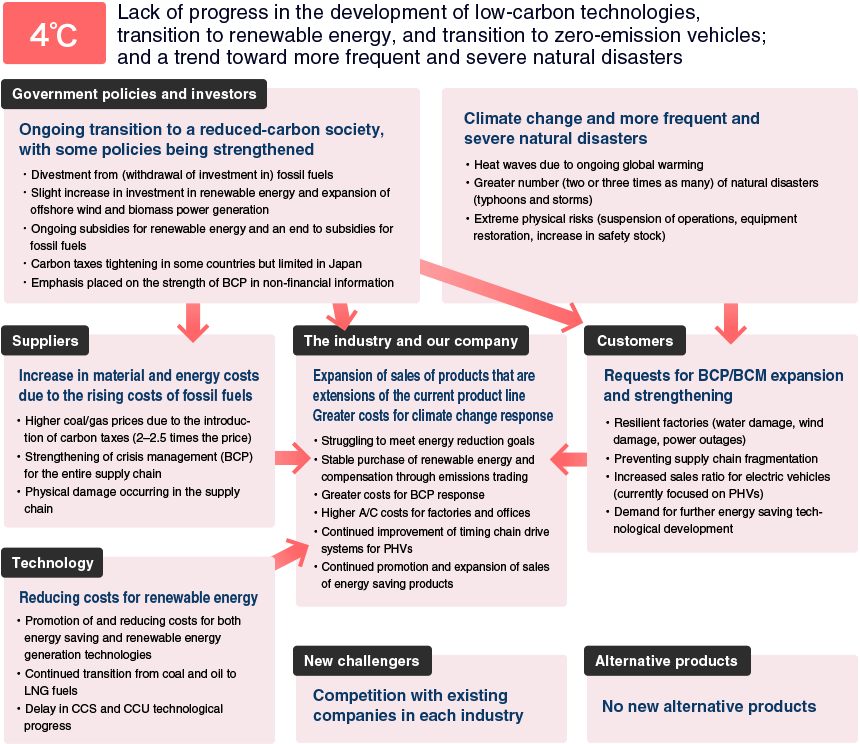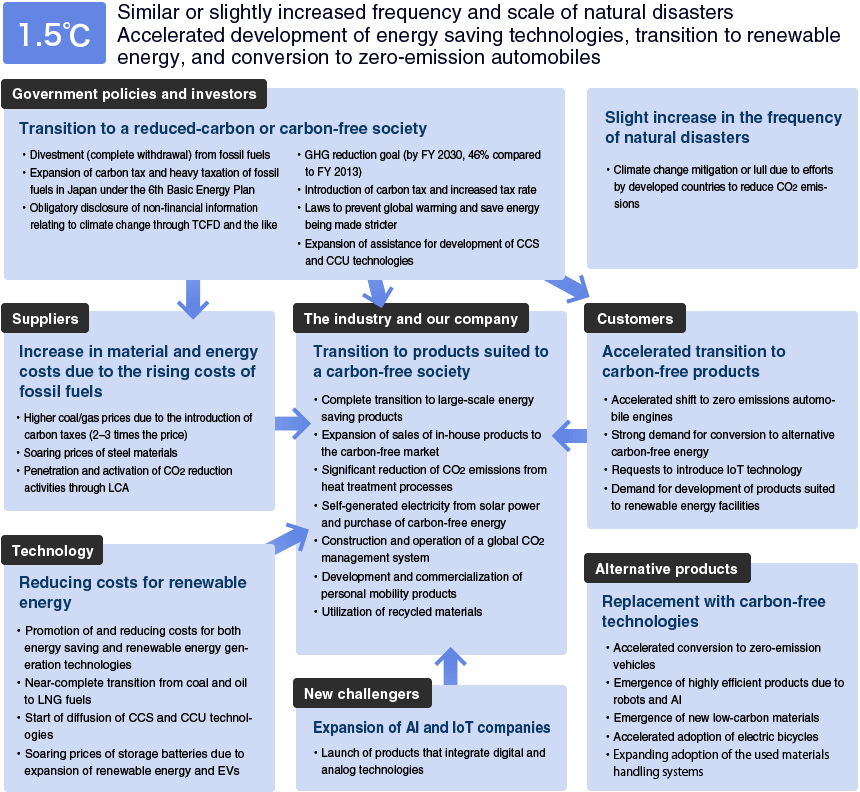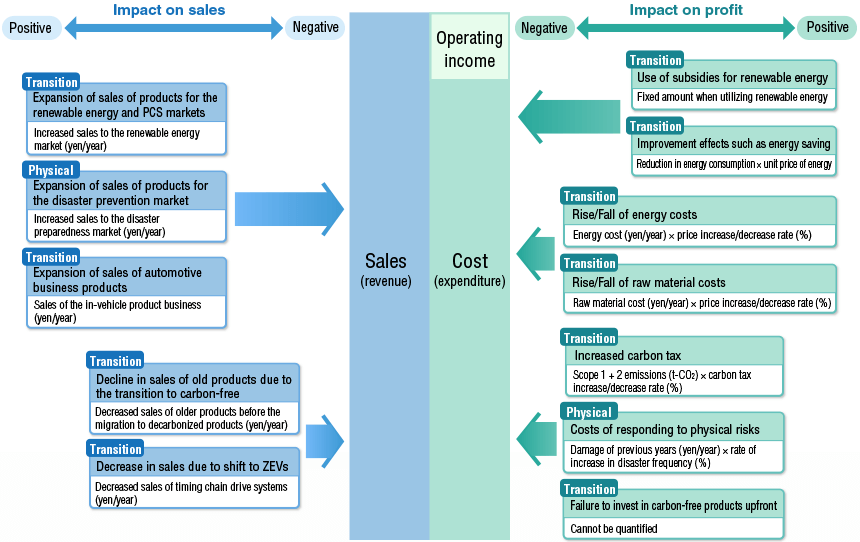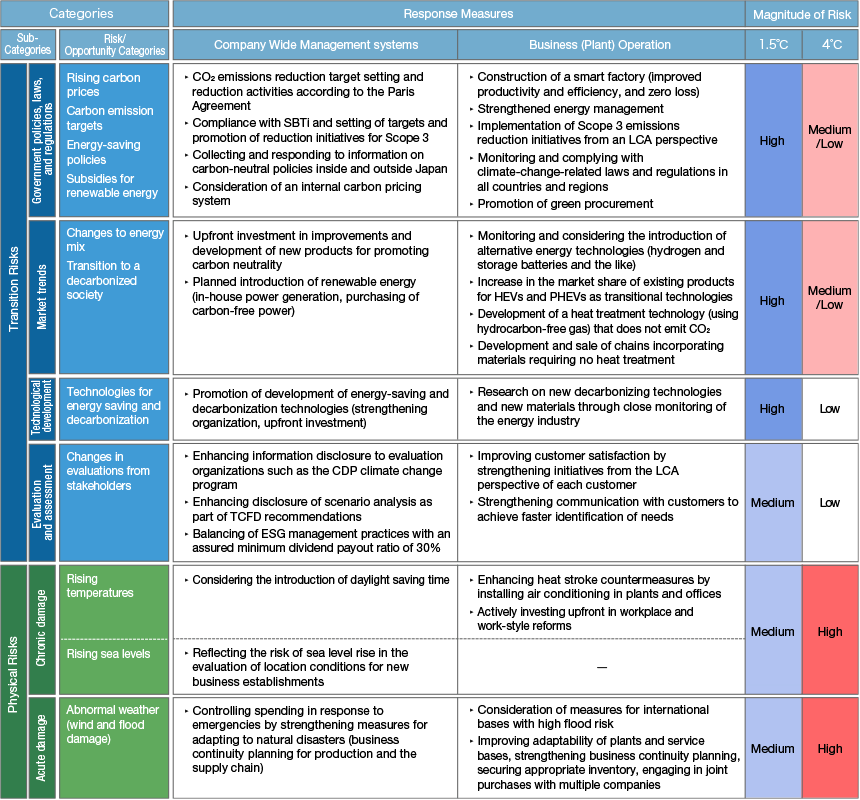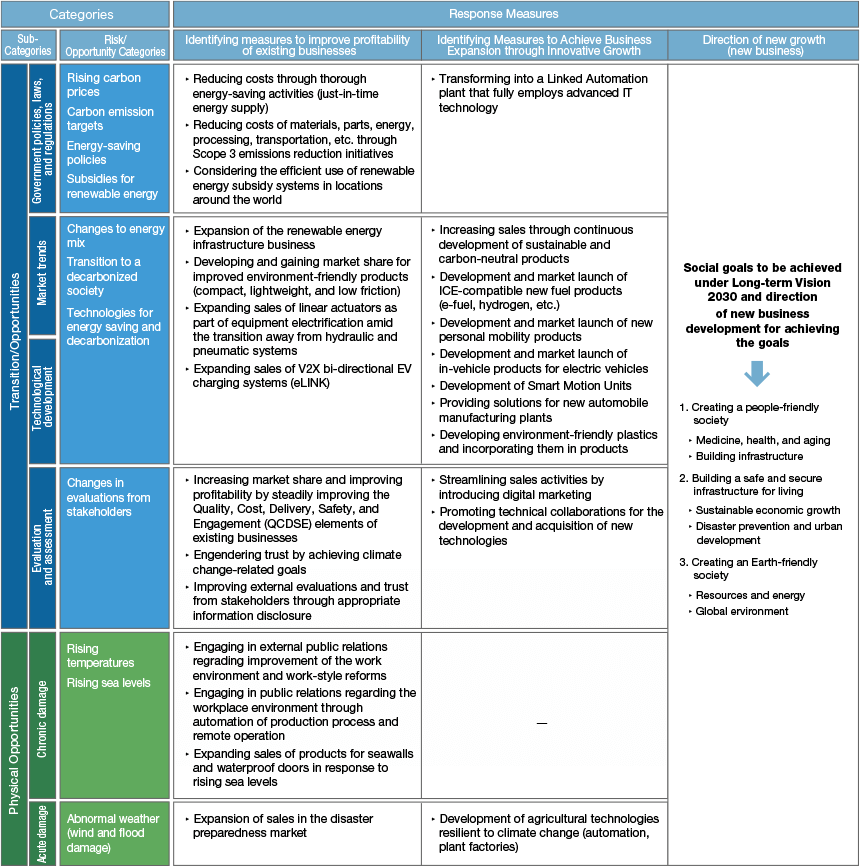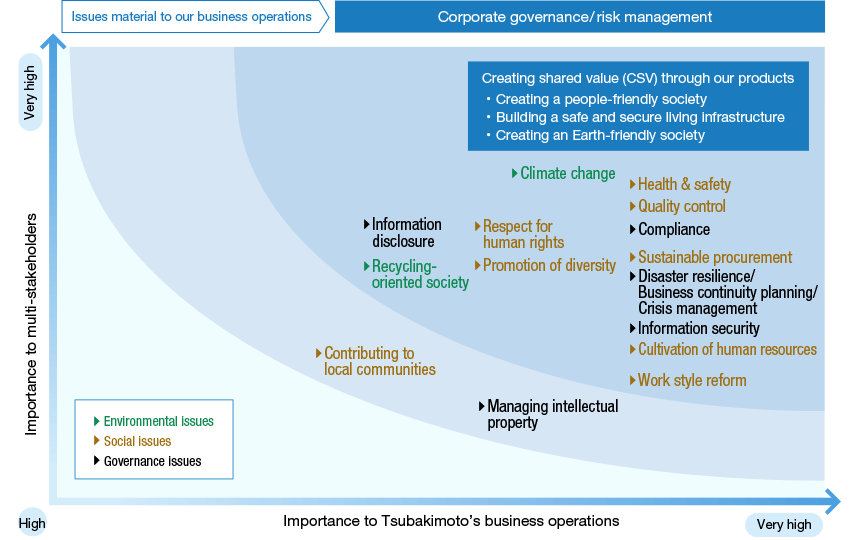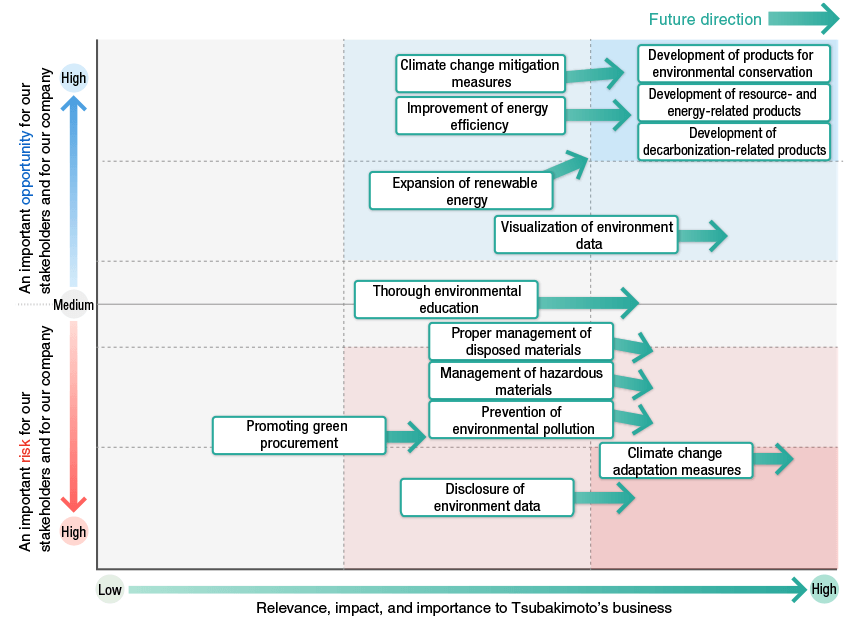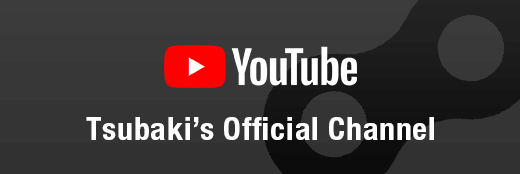Information Disclosure in Accordance with the TCFD
Governance
The Tsubaki Group’s sustainability initiatives are formulated by the Sustainability Committee, chaired by the COO, according to the terms of our Basic Policy on Sustainability.
The Sustainability Committee conducts risk assessments and assessments of importance of material issues with reference to information provided by each Committee (environment, quality, safety, etc.) and the Sustainability Promotion Managers Meeting, identifies important risks and opportunities for the Tsubaki Group, sets KPIs and targets, and comprehensively manages the progress of these initiatives. The Board of Directors receives regular reports from the Sustainability Committee on the status of initiatives and KPIs and the like. This system enables the Board of Directors to provide supervision.
Centered on the Tsubaki Group Environmental Committee, we are moving forward with specific initiatives to address environmental issues, including climate change. Based on the results of the assessments of importance of material issues implemented by the Sustainability Committee, the Environmental Committee will verify the demands of stakeholders and the progress of the company’s initiatives and evaluate the importance of environmental issues. We have also formulated an action plan in accordance with the Mid-term Management Plan for Carbon Neutrality and the CO2 Emissions Reduction Roadmap, and the entire Group is implementing the PDCA cycle with respect to all initiatives.
Climate Change-related Governance System
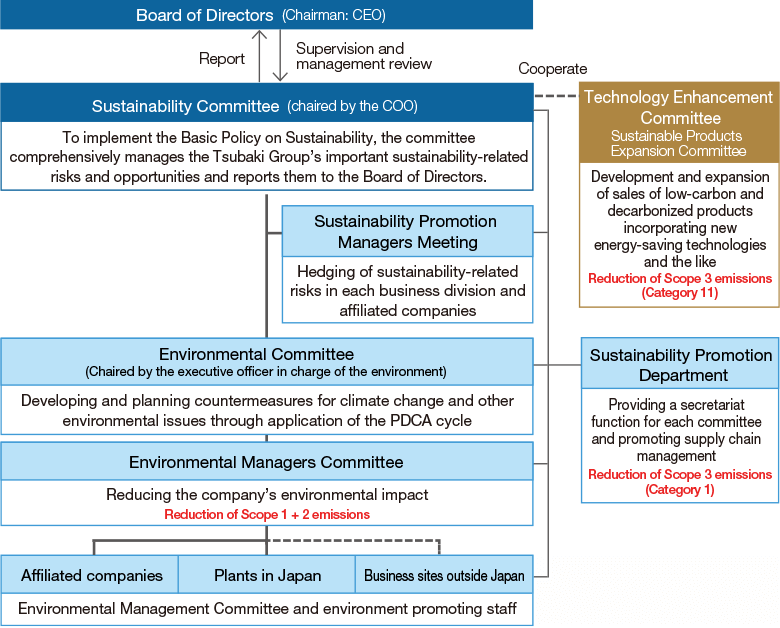
Scope 1: Direct emissions of greenhouse gases by the business operator itself (fuel combustion, production processes)
Scope 2: Indirect emissions associated with the use of electricity, heat, and steam supplied by other companies
Scope 3: Indirect emissions other than Scope 1 and Scope 2 (emissions of other companies related to the activities of the business operator)
| Chairman | Members | |
|---|---|---|
| Sustainability Committee |
COO | Executive officers in charge of business operations Secretariat: Executive officer in charge of sustainability Executive officer in charge of human resources |
| Sustainability Promotion Managers Meeting |
Executive officer in charge of sustainability | Managers of Sustainability-related Departments Secretariat: Sustainability Promotion Department |
| Environmental Committee | Executive officer in charge of the environment | General managers of Tsubakimoto Chain, Representatives of domestic manufacturing companies Secretariat: Sustainability Promotion Department |
Strategy (Scenario Analysis)
1. Implementation System and Scope of Scenario Analysis
Tsubakimoto Chain organized its current status and issues regarding TCFD-recommended disclosures and decided on specific disclosures through the following process.
Implementation System

Scope
| Business Scope | All business segments (Chain, Motion Control, Mobility, Materials Handling) |
|---|---|
| Regions Covered | All global regions |
| Target Subsidiaries | Consolidated subsidiaries |
2. Assessments of Importance of Risks and Opportunities
Climate change risks and opportunities are classified as either transition risks or physical risks, and the importance of each is assessed according to the risks and opportunities that are actually anticipated from both the magnitude and duration of the impact.
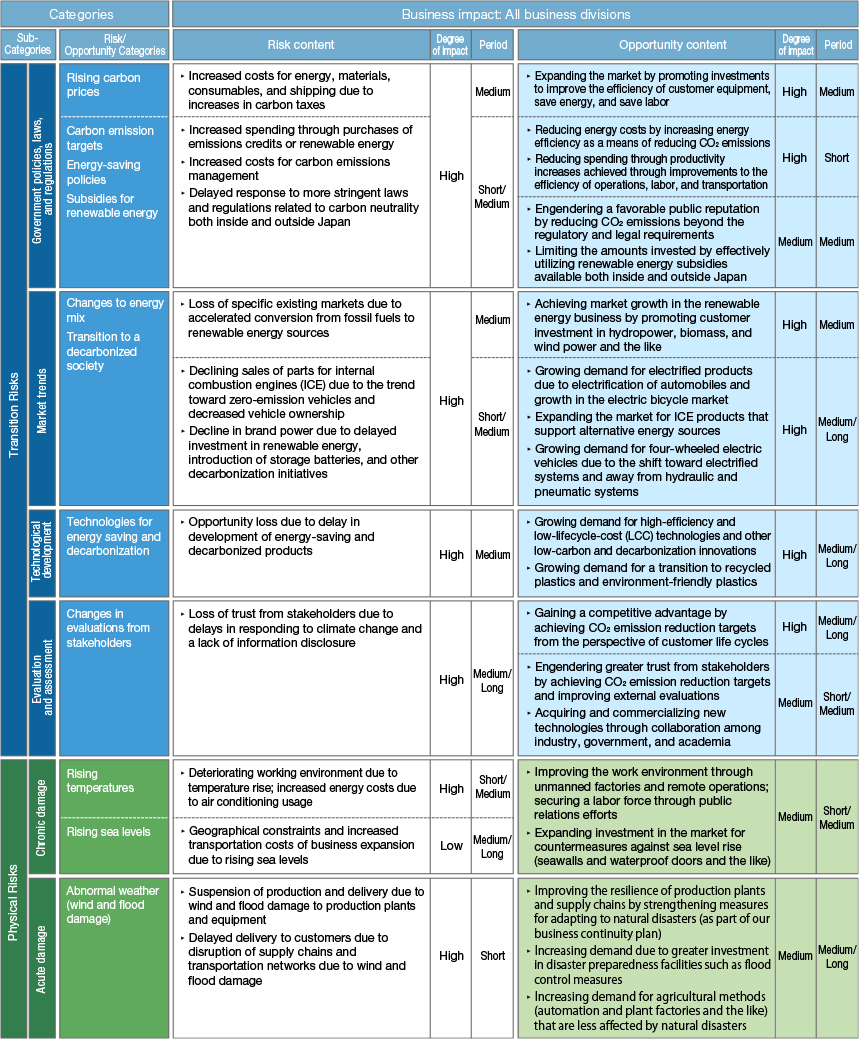
3. Definition of Scenario Groups
We analyze the risks and opportunities of climate change assuming a society in 2030 based on two scenarios: one in which the temperature rise is limited to within 1.5°C through a transition to a decarbonized society; and a scenario in which the temperature rise reaches 4°C.
| 4°C | 1.5°C | |
|---|---|---|
| Assumed Scenario | A world in which no measures are taken beyond the expected and the average temperature rises by more than 4°C within this century. Intensification of natural disasters will occur. | Efforts to mitigate climate change will be implemented, and greenhouse gas emissions will be virtually zero by 2050. |
| Predicted Changes in the External Environment | Progress was not achieved in the development of low-carbon technologies, the transition to renewable energy, or the adoption of zero-emission vehicles; natural disasters are more frequent and are becoming more intense.
* See figure below. |
The frequency and scale of natural disasters are the same or slightly increased. The development of energy-saving technologies, the transition to renewable energy, and conversion to zero-emission automobiles are accelerated.
* See figure below. |
| Reference Scenarios | IPCC/RCP8.5 Scenarios corresponding to the greatest greenhouse gas emissions in 2100 |
IPCC/SR1.5 The world depicted in the IPCC’s 1.5°C Special Report |
* When considering scenario analysis, we refer to the International Energy Agency (IEA) and the Intergovernmental Panel on Climate Change (IPCC).
External Environment Change Forecast for Each Scenario
4. Business Impact Assessment
We are considering the impact that both of the above scenarios will have on financial indicators.
As shown in the figure, there are numerous transition risks and opportunities associated with climate change, and these are shown to have positive and negative impacts on both net sales and profit. The single most important issue for us could be considered to be how to minimize the risks and maximize the opportunities.
In the future, we believe it will be important to draw up scenarios for each business unit, and to analyze the impact on their respective performance statements (sales and operating income) and balance sheets (investment plans and ROE and the like).
“Transition” indicates transition risk; “Physical” represents physical risk.
5. Scenario Analysis Results
Responding to and Addressing Risks
Regarding the risks identified in the scenario analysis, the magnitude of the risks and countermeasures are summarized.
Responding to and Addressing Opportunities
Under our Long-term Vision 2030, we examine risks and opportunities in terms of three factors: improving the profitability of existing businesses, expanding our business through innovative growth, and new growth (new businesses), and considering countermeasures.
Risk Management
Here at Tsubakimoto, in order to evaluate the importance of CSR issues related to the environment, society, etc., in FY 2019 we conducted a risk and opportunity assessment for each material issue through discussions among ESG-related divisions regarding both the degree of importance to the company and the importance to multi-stakeholders (Fig. 1). In the early part of FY 2020, we established KPIs and goals for each of the material issues, and initiated activities intended to systematize our activities to date and work on management issues from medium- to long-term perspectives. In the second half of FY 2021, we improved our governance system by establishing the Sustainability Committee and reviewing the structure of each committee. Going forward, the Sustainability Committee will periodically verify and review the assessments of importance of material issues related to ESG-related issues. In addition, efforts to address each issue through the PDCA cycle are implemented within each committee organization.
In June of FY 2021, we established the Tsubaki Group Long-Term Vision 2030 with FY 2030 as the target year, and announced the direction of our path forward and the Group we want to be. From the risks and opportunities that can be expected from the future social environment, we have clarified the CSV issues and CSR issues that Tsubaki should work on going forward, as well as the role we should play.
The Environmental Committee evaluates the importance and priority of environmental issues based on their degree of importance to stakeholders (vertical axis) and their degree of relevance and impact on our business (horizontal axis) (Fig. 2). The degree of importance to stakeholders is evaluated based on the magnitude of the negative side (risks to be reduced) and the positive side (opportunities to improve financial indicators). As a result of this decision, we revised our Basic Environmental Policy in March 2021. In response to climate change issues, we have committed to raising CO2 emissions reduction targets in accordance with the guidelines of the Paris Agreement and implementing reduction initiatives. Going forward, the Environmental Committee will continue to verify the demands of stakeholders and the progress of the company’s initiatives and periodically evaluate the importance of environmental issues, including climate change. Important matters are submitted to the Sustainability Committee for consideration.
Through these processes, we aim to enhance our corporate value by engaging in a cycle of identification and evaluation of climate-related risks.
Indicators and Goals
We have adopted medium- and long-term targets related to climate change.
The CO2 emissions reduction targets for Scope 1 + 2 adopted in 2017 were revised in April 2020, and the numerical targets were raised. Other targets have been adopted as priority matters under Long-term Vision 2030 and Mid-term Management Plan 2025, which were formulated in FY 2021.

*1 Scheduled to be changed in FY 2023, in accordance with the SBT Certification acquired in May 2023.
*2 SBT refers to the Science Based Target initiative (SBTi) to certify the CO2 emissions reduction targets of companies that are in line with the goal of the Paris Agreement of limiting global temparature rise to 1.5℃ above pre-industrial levels.
*3 The CDP is a leading global ESG evaluation institution that evaluates the greenhouse gases (GHG) emissions reduction initiatives and strategies for tackling climate change, which are implemented by companies and cities around the world.
*4 Evaluation of response submitted in July 2022, based on the results of FY 2021.
* Annual trends for the above quantitative targets are listed in the Response to Climate Change section.

